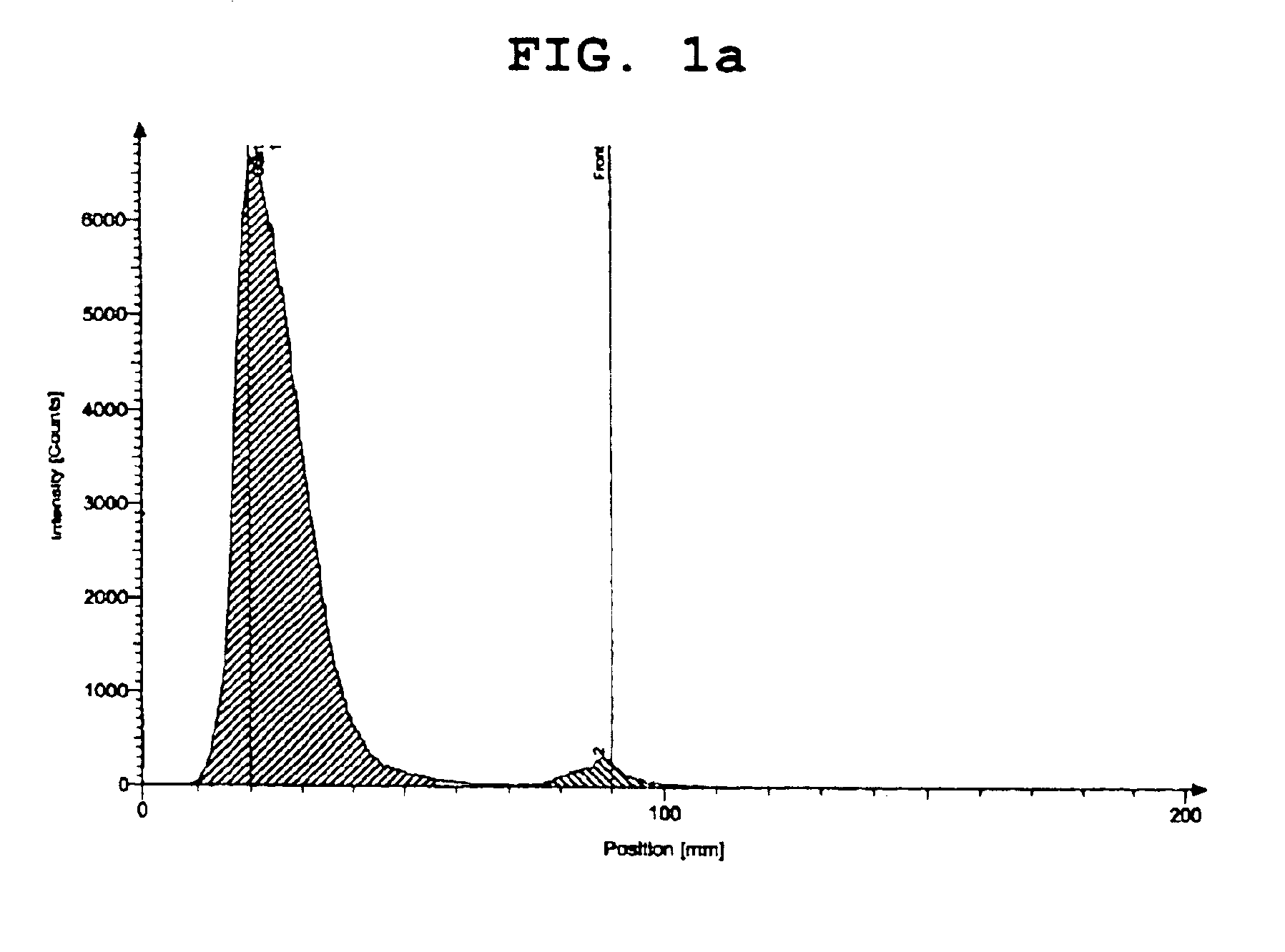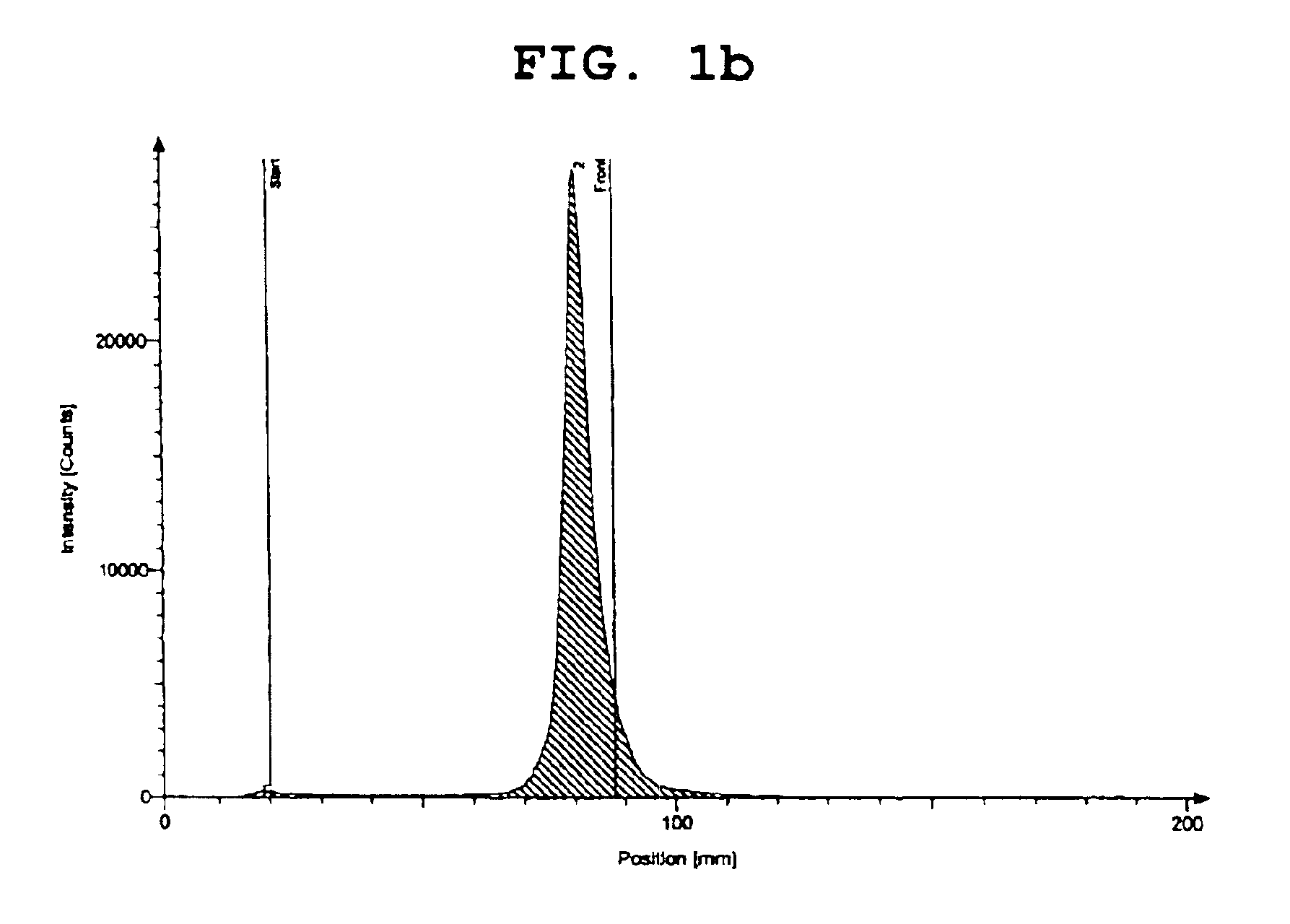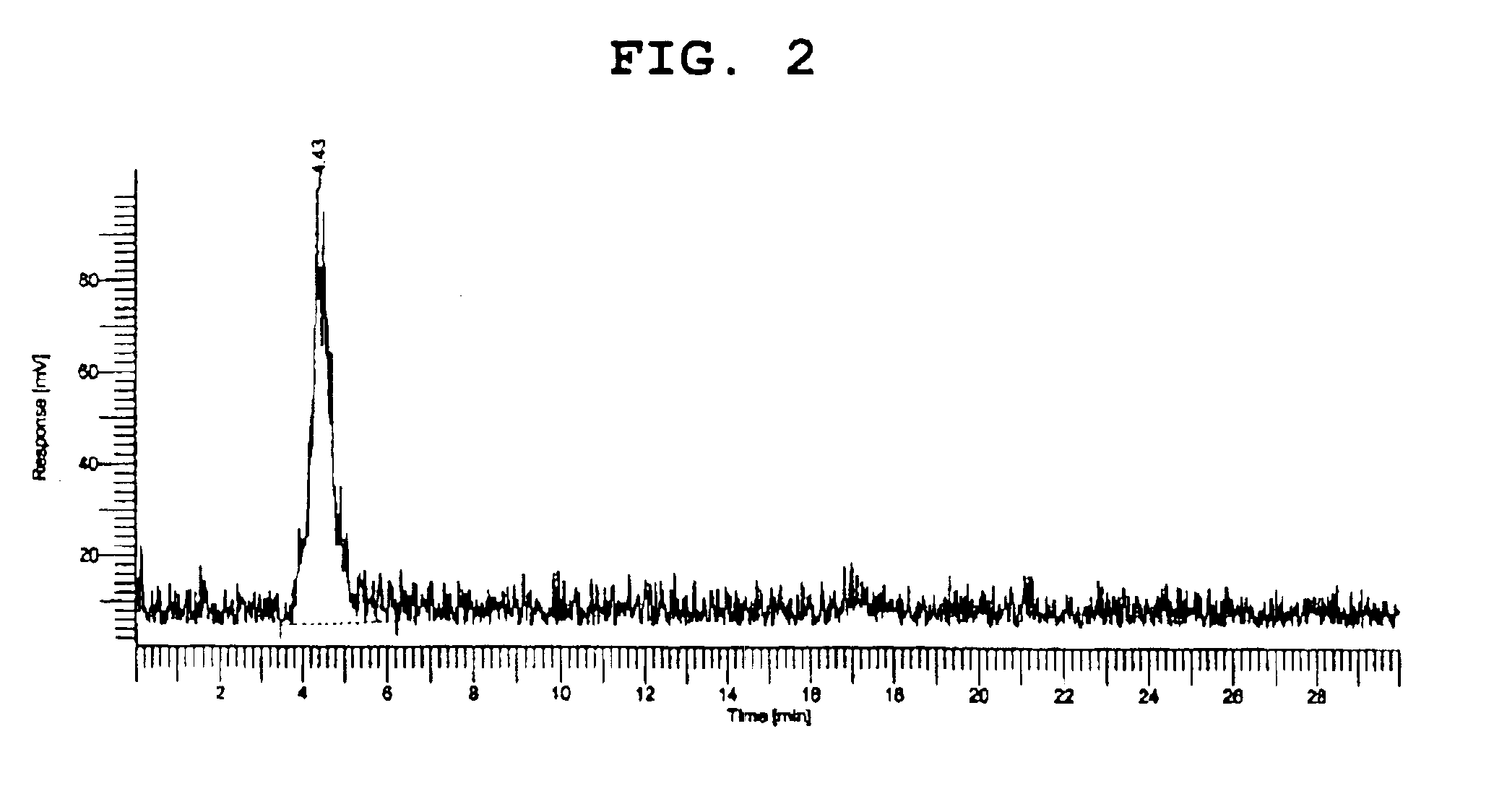Method of preparing rhenium complex using borohydride exchange resin
a technology of borohydride exchange resin and rhenium complex, which is applied in the field of preparing rhenium complexes by using borohydride exchange resin, can solve the problems of residual toxicity, unstable production of impurities such as colloids, and limitations on the use of predetermined amounts or more of the above reducing agen
- Summary
- Abstract
- Description
- Claims
- Application Information
AI Technical Summary
Benefits of technology
Problems solved by technology
Method used
Image
Examples
example 1
Preparation of Rhenium Complex
[0036]Step 1:
[0037]To a vial containing 10 mg of ethylenediamine tetraacetate, 10 mg of mannitol and 2 mg of stannous chloride, 4 ml of aqueous solution of [188Re] sodium perrhenate (5-10 mCi) and 2 ml of 1N hydrochloric acid were added, and then completely dissolved with stirring for 15 min. At this time, a resultant reaction was a rhenium-ethylenediamine acetate complex.
[0038]Step 2:
[0039]All of or parts of the above complex was introduced into a vial containing 1 mg of 3,3,10,10-tetramethyl-1,2-dithia-5,8-diazacyclodecaine and 5 mg of borohydride exchange resin, and mixed well and then reacted at room temperature for 3 hours. Thereafter, a filtering process using a membrane filter (0.22 μm) was performed, to prepare a rhenium-labeled sulfide.
experimental example 1
Measurement of Labeling Efficiency of Rhenium-Ethylenediamine Acetate Complex 1
[0041]The rhenium-ethylenediamine acetate complex prepared in Step 1 of Example 1 was measured for labeling efficiency by use of thin-layer chromatography. As such, conditions were acetone and distilled water.
[0042]The results are shown in FIGS. 1a and 1b. Specifically, FIG. 1a shows the measurement result of thin-layer chromatography using acetone as a developing solvent, and FIG. 1b shows the measurement result of thin-layer chromatography using distilled water as a developing solvent.
[0043]As apparent from FIGS. 1a and 1b, the rhenium-ethylenediamine acetate complex prepared in Step 1 of Example 1 is confirmed to have labeling efficiency of 95% or more.
experimental example 2
Measurement of Labeling Efficiency of Rhenium-Ethylenediamine Acetate Complex 2
[0044]The rhenium-ethylenediamine acetate complex prepared in Step 1 of Example 1 was measured for labeling efficiency using high performance liquid chromatography. In this case, a methanol / triethylammoniumphosphate buffer was used as a mobile phase, and a flow rate was maintained at 1 ml / min.
[0045]The results are depicted in FIG. 2.
[0046]In FIG. 2, it can be seen that a peak observed at retention time of 3.8 min corresponds to rhenium-ethylenediamine tetraacetate. From this, the rhenium-ethylenediamine tetraacetate complex is confirmed to be prepared.
PUM
 Login to View More
Login to View More Abstract
Description
Claims
Application Information
 Login to View More
Login to View More - R&D
- Intellectual Property
- Life Sciences
- Materials
- Tech Scout
- Unparalleled Data Quality
- Higher Quality Content
- 60% Fewer Hallucinations
Browse by: Latest US Patents, China's latest patents, Technical Efficacy Thesaurus, Application Domain, Technology Topic, Popular Technical Reports.
© 2025 PatSnap. All rights reserved.Legal|Privacy policy|Modern Slavery Act Transparency Statement|Sitemap|About US| Contact US: help@patsnap.com



